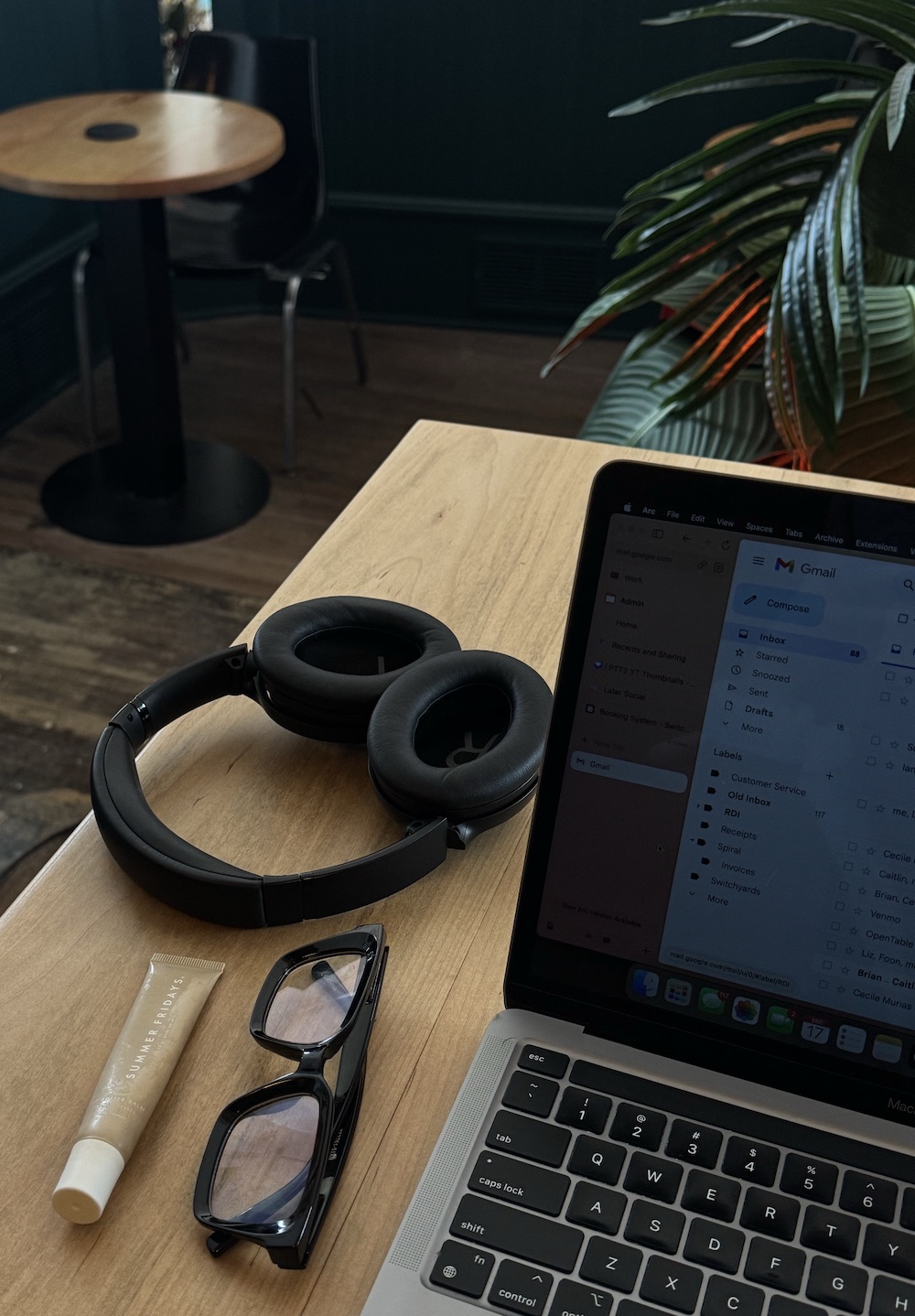If you run a creative or service-based business, you’ve probably heard about SEO (Search Engine Optimization) for years. It’s how you get your website to rank in Google, Pinterest search, or YouTube search results when someone types in a keyword.
But there’s a new acronym making waves in the marketing world: GEO — Generative Engine Optimization.
And if you want to future-proof your business in a world of AI search optimization, you’re going to want to know how to get recommended by AI.
Why? Because people aren’t just searching “how to…” anymore. They’re asking AI questions like:
- “Who’s the best wedding photographer in Portland?”
- “Top copywriters for small business websites”
- “Event planners for luxury Napa Valley weddings”
If AI tools like ChatGPT, Gemini, Perplexity, or Google’s AI Overviews trust you, your business could be one of the names they recommend — right there in the answer.

The Big Shift: From SEO to GEO (and Why It’s Not Either/Or)
Here’s the thing: SEO isn’t going anywhere. You still want to rank in search results for people who are actively looking for what you do.
But GEO is about something slightly different — and just as important. Instead of optimizing to be found in a list of links, you’re optimizing to be named in an AI-generated answer.
Think of it like this:
- SEO → You’re competing to be on the shelf.
- GEO → You’re competing to be hand-picked and recommended directly.
The two work together. In fact, many of the things you do for SEO (clear service descriptions, authority-building, keyword-rich content) also support GEO. The difference is that with GEO, you need to think about how AI is going to parse and trust your content.
Why GEO Marketing Is a Huge Opportunity for Creative Businesses
When you hear “AI search optimization,” your first thought might be:
“Wait… if AI is giving all the answers, why would anyone click on my blog?”
Here’s the flip side: if you do this right, AI becomes a built-in referral machine.
Imagine you’re a brand photographer in Portland. A potential client asks AI, “Who’s the best brand photographer in Bend, Oregon?”
If you’ve done the work, AI could pull your name — alongside a short description of what you do and why you’re amazing — without that client ever digging through dozens of websites.
This is massive for:
- Wedding pros (planners, photographers, florists)
- Designers (brand, web, interior)
- Consultants + coaches
- Podcasters and content creators
- Specialized creatives who work locally or globally
Instead of hoping to get noticed in a sea of search results, you can position yourself to be the name AI recommends.
What AI Looks for When Recommending Service Providers
Before we get into the exact steps, here’s what AI is likely scanning for when it chooses who to recommend:
- Clear service + location signals (“Wedding planner in Minneapolis”)
- Authority indicators (testimonials, case studies, awards, press)
- Consistent business info across your website, Google Business Profile, and directories
- Niche- and location-specific content showing you’re an expert in your field
- Fresh, updated content that signals you’re active and relevant
The good news? You can absolutely control these things.

How to Get Recommended by AI (7 GEO Marketing Tips)
1. Say exactly what you do + where you do it
Ditch the vague “helping brands shine” copy. In plain language, say exactly what you do and where. This should be on your homepage, in your Google Business Profile, and anywhere your business is listed.
Example: “Luxury elopement photographer in Seattle” or “Business strategist for wedding professionals.”
2. Show your receipts
AI wants proof you’re the real deal. Add client testimonials, portfolio examples, press features, and awards directly to your site (don’t hide them on Instagram stories that disappear in 24 hours).
3. Be consistent everywhere
Your business name, service, and location should be identical across your website, directories, and social media. If your Instagram says “Wildflower Photo Co.” but your Google Business Profile says “Wildflower Photography Studio” and your Yelp lists “Wildflower Studios,” AI might not realize they’re the same business.
4. Create niche- and location-specific content
Blog about your expertise in a way that proves you’re deeply embedded in your niche and area.
Example posts:
- “Best Branding Shoot Locations in Seattle”
- “How to Plan a Sustainable Wedding in California Wine Country”
- “10 Pinterest Strategies for Handmade Product Sellers”
5. Test how AI sees you
Ask ChatGPT, Gemini, or Perplexity:
- “Who are the top [your niche] in [your city]?”
- “Best [your service] for [specific client type]?”
If you’re not on the list, it’s a sign to strengthen your GEO signals.
6. Keep things fresh
An outdated site is a red flag for AI. Update your site regularly with new blog posts, portfolio pieces, and recent client work. Even small updates can signal that your business is active.
7. Make it easy to quote you
AI pulls from clean, scannable content. Use question-based headings, bullet points, and quick takeaways. Consider adding a “TL;DR” section at the end of your posts so both humans and AI can grab the key points quickly.
Bonus GEO Boosters for Creative Business Owners
If you want to go the extra mile:
- Name-drop your service and location naturally in your blogs (“As a social media strategist in New Orleans…”).
- Link your blog posts to your service pages so AI connects your expertise with your offer.
- Cite reputable sources when relevant. AI trusts sites that connect to other trustworthy content.
How GEO Fits With SEO (and REO)
- SEO → Gets you ranked in search results.
- GEO marketing → Gets you named in AI-generated answers.
- REO (Recommendation Engine Optimization) → Gets you recommended in algorithm feeds like Pinterest, TikTok, Instagram, and YouTube.
The most visible creative businesses in 2025? They’re playing in all three spaces.
TL;DR: How to Get Recommended by AI
- Be clear about what you do and where you do it.
- Show proof you’re credible (testimonials, case studies, press).
- Keep your business info consistent across the internet.
- Publish niche- and location-specific content regularly.
- Test AI to see if you’re being recommended.
- Update your site often.
- Use scannable, quotable formatting.
Your Next Step
AI isn’t just changing how people search — it’s changing who gets recommended.
If you want to be one of those names, you’ve got to give AI the proof and clarity it needs to choose you.
At Life Goals Marketing, we help creative business owners create blog content that:
✔ Ranks in search (SEO)
✔ Gets named in AI answers (GEO marketing)
✔ Shows up in feeds (REO)
Learn more about how we approach blogging for business and how we can help your creative business get seen.







Comments +